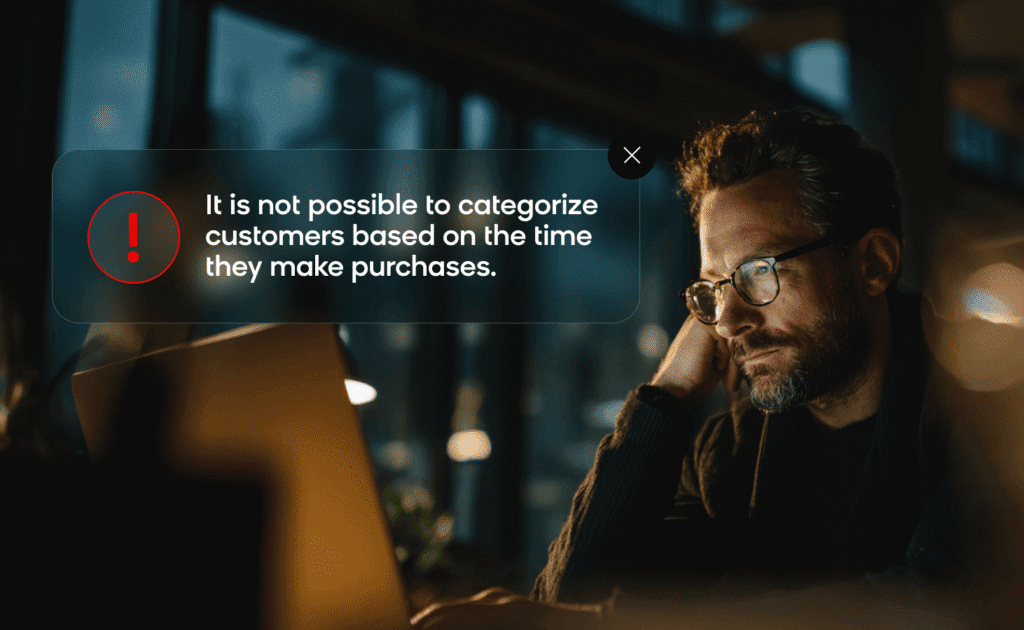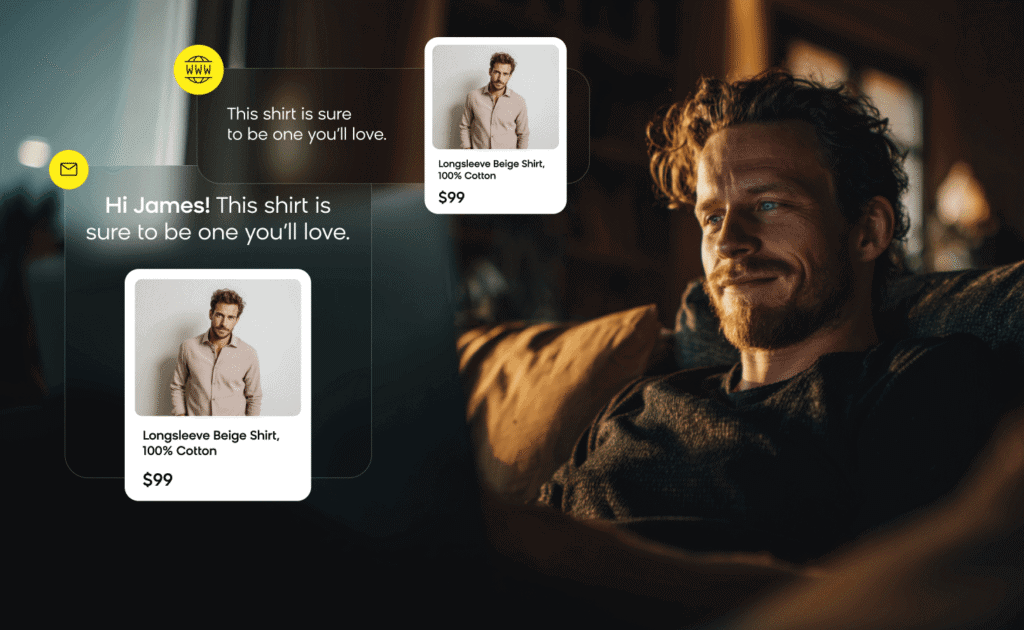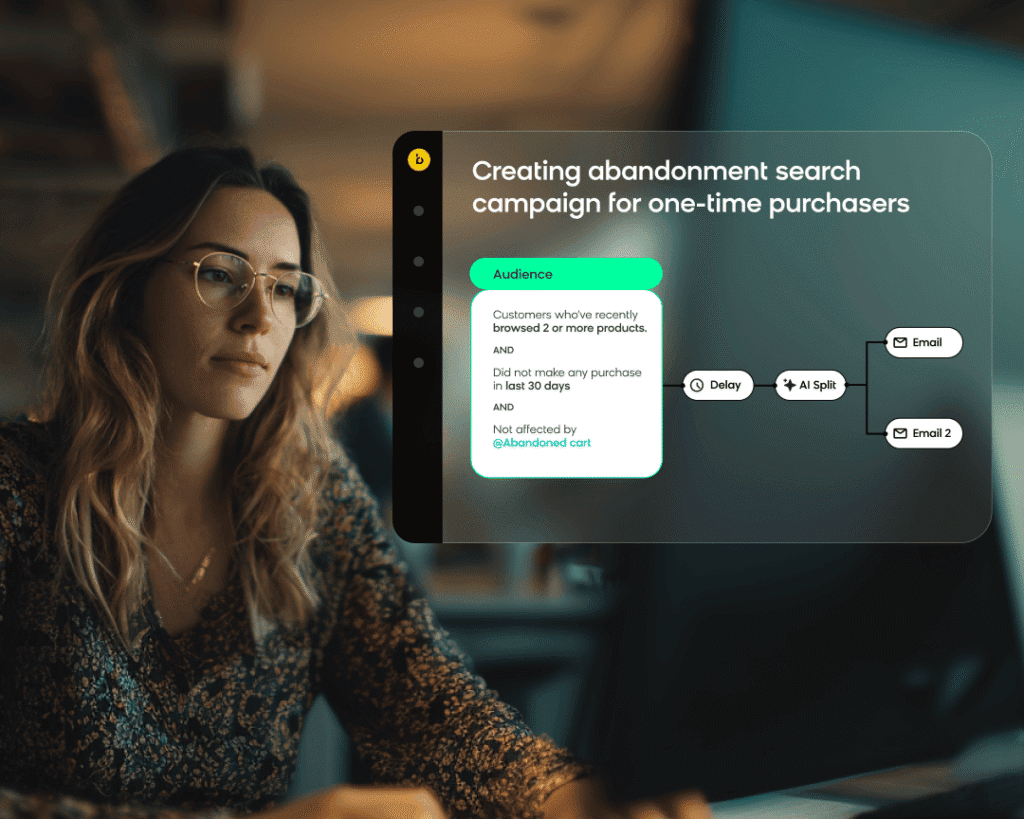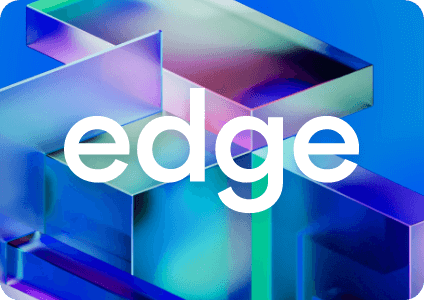Marketing automation for enterprise brands has reached a pivotal moment. The rule-based systems you’ve relied on are giving way to truly intelligent platforms that don’t just execute campaigns — they think, learn, and optimize autonomously.
This isn’t about upgrading your email scheduler. It’s about transforming how your brand connects with customers across every touchpoint, from that first website visit to the checkout confirmation and beyond. Today’s enterprise marketing automation platforms are powered by AI and can predict customer behavior, generate personalized content, and orchestrate complex omnichannel journeys — all without constant human oversight.
For enterprise marketers, this shift represents both an opportunity and an imperative. Brands that embrace AI-native marketing automation gain decisive advantages in customer engagement, operational efficiency, and revenue growth. Those that don’t risk falling behind competitors who can personalize at scale while reducing manual workload.
Let’s explore how AI is transforming what marketing automation can do on the enterprise level.
Why Your Current Platform Limits Enterprise Growth
Many enterprise marketing automation platforms — including long-established names like Salesforce, Oracle, and Adobe — were designed for an earlier generation of marketing needs. These solutions, representative of a broader class of legacy systems, were designed for a time when personalization wasn’t a priority. As a result, they often rely heavily on manual workflows and rigid customer journeys.

With modern customers now expecting real-time personalization that adapts to their preferences, this older approach makes it difficult for brands to keep pace with customer expectations. In particular, these legacy systems lead to some critical bottlenecks for enterprise brands:
- Data fragmentation: Customer information lives in data silos, making real-time personalization nearly impossible. When a customer abandons their cart at 2 p.m., your system might not trigger a relevant email until 6 p.m. — after they’ve already purchased from your competitor.
- Manual dependency: Every campaign requires human setup, testing, and optimization. Your team spends more time managing workflows than developing strategy.
- Static journeys: Predefined customer paths can’t adapt when behavior changes midstream. If a customer shows interest in premium products after entering through a discount campaign, your automation can’t pivot accordingly.
Enterprise marketing automation has evolved beyond these limitations. Instead of executing predetermined workflows, intelligent platforms like Bloomreach observe customer intent, predict behavior patterns, and dynamically personalize engagement across all channels in real-time.
| The Enterprise Marketing Automation Evolution | |||
| Capability | Legacy Automation | Rule-Based Systems | AI-Native Platforms (Bloomreach) |
| Campaign Setup | Manual creation per segment | Workflow-based templates | Goal-directed AI orchestration |
| Content Optimization | Static A/B testing | Trigger-based adjustments | Predictive, generative, self-optimizing |
| Channel Coordination | Single or disconnected execution | Basic multichannel workflows | Omnichannel, behavior-informed coordination |
| Decision-Making | Human-defined parameters | If/then rule logic | Cognitive AI with autonomous decisioning |
While automated systems execute commands efficiently, autonomous marketing systems act as intelligent marketing agents. They observe customer signals, adapt strategies in real time, and rewire entire customer journeys based on emerging patterns — without requiring your team to manually adjust every parameter.
This cognitive approach transforms your marketing from reactive to predictive. To stay competitive against more agile competitors, enterprise brands must embrace agentic personalization to seamlessly combine prediction, autonomy, and personal relevance.
6 Must-Have Capabilities for Enterprise Marketing Automation
For your enterprise marketing automation to work effectively today, you’ll need to ensure it’s equipped with the right features. Here are six essential capabilities you need to drive success:
Real-Time Data Activation That Actually Works
Your enterprise marketing automation platform should instantly unify and act on first-party data and live customer behavior. This will give you a complete picture of every customer interaction — from email clicks and channel preferences to website searches and purchase history — that updates in real time across all marketing channels.
Most platforms suffer from data latency that kills personalization opportunities. When a customer browses winter coats on your website, your system should remember that behavior for the next email message you send. Otherwise, you’re essentially marketing blind.

Bloomreach Engagement ensures instant segment updates and intent-responsive targeting without the delays that plague traditional CDP-dependent systems. Your customer data doesn’t just sit in a warehouse — it actively powers every marketing decision in real time.
AI That Generates Content, Audiences, and Strategies
Your marketing automation should do more than follow rules — it should create. Advanced AI generates responsive messaging, identifies high-propensity customer segments, and adapts delivery timing based on individual behavior patterns, all without human intervention.
Consider this scenario: A customer who typically purchases budget items suddenly browses premium products. Your AI should recognize this shift, generate appropriate messaging about premium value propositions, and adjust the entire communication strategy for that customer.
Bloomreach’s Loomi AI was designed for commerce use cases and is trained to help enterprise brands personalize messaging at scale. This leads to significantly higher engagement rates and conversions compared to one-size-fits-all approaches.
Omnichannel Orchestration That Automatically Adapts
Manual journey mapping has become obsolete for enterprise brands managing millions of customer interactions. Platforms that use agentic AI can now orchestrate experiences that adjust dynamically across web, email, mobile, SMS, and other commerce touchpoints — without requiring your team to predefine every possible path.
Here’s how autonomous orchestration works in practice:
- A customer clicks a product link in your email, browses similar items on your website, but leaves without purchasing anything.
- Intelligent marketing automation instantly recognizes this sequence and reshapes the journey by adjusting email timing and customizing website recommendations.
- If the customer doesn’t click on the follow-up email, the AI agents can determine if something needs to change, such as changing to SMS or providing different offers.
This adaptive orchestration happens automatically across all channels and changes based on a customer’s real-time behavior instead of strictly following a preset path.
Speed Without Sacrificing Strategic Control
The most effective enterprise marketing automation platforms reduce manual workload across segmentation, content generation, and optimization while actually improving ROI and marketing productivity. You want your team focusing on strategy and creative development, not managing campaign mechanics.
This isn’t about replacing human creativity with robots. It’s about amplifying your team’s strategic impact by automating the operational tasks that don’t require human insight.
Personalization Across Your Entire Customer Experience
True enterprise personalization spans both your outbound marketing campaigns and on-site experiences (e.g., web personalization, search results, checkout optimization, and mobile app interactions). Fragmented personalization that works beautifully in email but fails on your website creates disjointed experiences that reduce conversion rates and customer satisfaction.

After all, your customer doesn’t think in channels. They experience your brand as one entity across all touchpoints. When they receive a personalized email about one type of shirt, then visit your website and see shirts recommended in a completely different style and price range, that disconnect undermines the entire relationship.
A Unified Intelligence Engine
Advanced marketing automation platforms connect customer behavior across commerce, marketing, and service interactions. This cross-functional intelligence leads to higher relevance and continuous learning that improves performance over time.
Think of it as having a unified brain for your entire customer experience. An action on your website signals intent that can inform your email content, product recommendations, SMS timing, and even customer service interactions. Every touchpoint learns from every other touchpoint.
To accomplish this, you need a customer data engine that can unify your data in real time and enable you to act on it just as quickly. This unified intelligence enables the kind of seamless, relevant experiences that build customer loyalty and drive revenue growth.
Real Enterprise Results From Autonomous Marketing
Let’s look at concrete, measurable outcomes from brands using AI-driven marketing automation. These aren’t theoretical benefits — they’re proven results from complex enterprise environments across diverse industries.
Global Personalization Without Manual Complexity
Desigual achieved localized messaging and behavior-driven segmentation at a global scale across dozens of countries. With Bloomreach, the brand could use AI to dynamically tailor email campaigns to real-time customer data.
As a result, Desigual is not able to reduce campaign creation time by 75%, scaling up to send over 80 personalized campaigns across 72 countries.

More Effective Performance Optimization
Ultimate Performance consolidated all its channels and marketing tools into Bloomreach’s all-in-one solution. This has allowed the personal training brand to create omnichannel campaigns that it can then iterate on using real-time insights.
This testing and optimization helped the brand drive an 11% increase in email click rates and a 23% boost in click-to-open rate.

Transformative Marketing Results After Replacing Legacy Tech
The AA had big marketing goals but was being held back by legacy software, which had long data processing times, lengthy campaign execution runways, and an inability to quickly test and optimize across channels.
By moving to Bloomreach Engagement, The AA was able to empower its teams to make faster and better-informed decisions while eliminating manual roadblocks. Thanks to the unified platform, the brand has been able to increase sales by 146% and double revenue.

Start Transforming Your Enterprise Marketing Automation
The competitive landscape has evolved beyond choosing between manual campaign management and basic automation workflows. Today’s decisive factor for enterprise brands is autonomous marketing — AI-driven systems that think, learn, and optimize independently while delivering genuinely personalized experiences at scale.
This transformation enables your marketing organization to scale decision-making, personalization, and performance optimization without proportionally scaling team size or operational complexity. Instead of marketing being a resource-intensive cost center requiring constant manual optimization, it becomes an efficient, profitable growth engine that improves performance over time.
The autonomous future isn’t some far-off theoretical — it’s here now, creating immediate competitive advantages for early adopters and growing disadvantages for brands still relying on manual optimization and fragmented systems.
If you want your enterprise marketing automation strategy to keep up with the times, you need a platform like Bloomreach Engagement. Our unified solution allows you to capture and activate customer data, orchestrate campaigns across all your channels, and gather insights to inform future campaigns — all in real time and autonomously. Ready to see how autonomous personalization transforms enterprise marketing performance? Schedule a personalized demo today to see Bloomreach in action.













